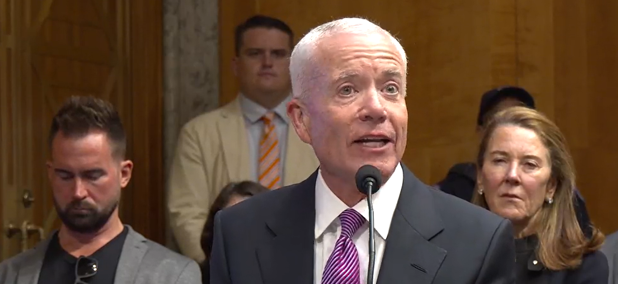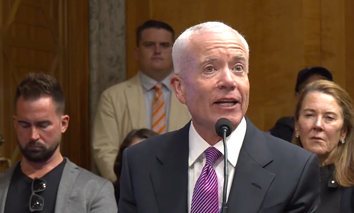Leadership
Latest FEMA acting administrator steps down, with no permanent chief tapped by Trump
Current agency chief of staff Karen Evans will become the Trump administration's third acting head of the emergency management agency on Dec. 1.
Longtime Agriculture tech executive departs government
Gary Washington, USDA’s long-serving chief information officer, is leaving government after being moved to a new role earlier this fall.
Energy names its third permanent CIO since the start of Trump 2.0
Dawn Zimmer has had multiple stints this year as the department’s acting CIO.
At NSA, a leadership vacuum and staff cuts threaten morale and operational strength
"That’s what happens when your boss disappears, and then some of your lead unicorns also disappear,” one person said.
Top cybersecurity official exits for TSA role amid recent cyber office reductions
Ryan Donaghy had served at the Cybersecurity and Infrastructure Security Agency since 2016. It’s not clear if she was voluntarily moved to TSA or was given transfer orders.
Upcoming White House cyber strategy to seek more involvement with private sector
The Trump 2.0 cyber strategy is in development, National Cyber Director Sean Cairncross said, though he did not elaborate on when it would be released.
Exclusive
Hegseth fired the Air Force’s top lawyer. The JAG who took on the job is stepping away.
It’s been eight months since the service had a Senate-confirmed leader in the role.
GSA will be ‘multiplier for efficiency and modernization,’ nominee for administrator says
Edward Forst, President Trump’s nominee to lead the General Services Administration, testified before the Senate Homeland Security and Governmental Affairs Thursday.
How Trump’s OPM director wants to attract tech talent after months of workforce cuts
OPM Director Scott Kupor wants to bring on new feds with cutting edge skills, but the government’s recent flood of layoffs and resignations could complicate that effort. With a government shutdown ongoing, too, the administration is threatening more layoffs.
Over 100 cyber professionals call for quick Kirsten Davies confirmation as DOD CIO
Davies was nominated in May and is scheduled to testify on Thursday.
Agriculture taps DOGE associate as its tech lead, reassigning previous CIO
Sam Berry, who’s been at USDA for months as part of the Department of Government Efficiency, is the agency's new chief information officer.
Exclusive
GSA launches FAS Office of Centralized Acquisition Services
The office will be headed by longtime GSA executive Tom Meiron.
Social Security announces leadership team light on government experience
The agency’s new leadership roster — announced alongside a reorganization plan sources say is short on details — is intended to bring a fresh perspective into SSA, its commissioner said. Critics argue they lack the expertise usually required of most agency leaders.
OPM tech lead Greg Hogan leaves post
The personnel agency’s handling of sensitive agency data — and who can access it — has been at the center of many lawsuits since the start of Trump 2.0.
GSA deputy Stephen Ehikian to depart post
Ehikian — who, until recently, served as GSA’s acting administrator — is the latest day one Trump appointee to leave the government.
VA's suicide prevention lead departs government
Dr. Matthew Miller, the executive director for VA Suicide Prevention, has overseen efforts to explore the use of innovative solutions during his tenure.
CISA’s head of legislative affairs to soon depart
Kate DiEmidio, who most recently served as the top policy executive at Dragos, is leaving voluntarily after spending three months in the role.
Exclusive
Meet the Trump appointee apparently maintaining 'unheard of' ties to Tesla
Thomas Shedd, who heads the Technology Transformation Services at the General Services Administration, reported on his public financial disclosures that he is “on a leave of absence” from Tesla in a rare arrangement, according to experts.
Airbnb co-founder and DOGE associate to head new federal design office
Joe Gebbia has been working on modernizing retirement processes at the Office of Personnel Management as part of his work with the Department of Government Efficiency.
Exclusive















































